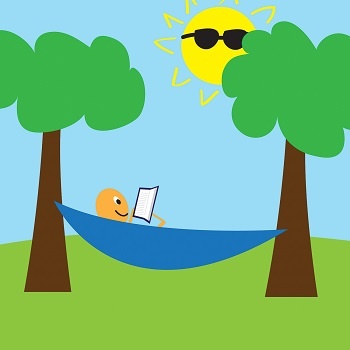What are you reading?

For nearly 30 years of doing professional development workshops in reading and writing, I have been asking this question. Madelyn Hunter told me once (yes, I am old enough to say this….) that trainers need to get participants talking in the first three minutes of a workshop. “What are you reading?” gets me started. Participants have suggested some of my best reads, and, for this reason alone, I doubt I will relinquish this practice. If I have a group that does not respond to this question, I revert to, “Tell me the title of a book that really impacted your life – even if it was when you were very young.” This always renders some reaction; participants readily respond with: To Kill a Mockingbird, The Giving Tree, A Tree Grows in Brooklyn, The Outsiders, Harry Potter, Nancy Drew.
Why do I start this way? Seven thousand high school students a day in this country quit school. That’s right – SEVEN THOUSAND PER DAY. Seven thousand students take “off-ramps” from the public education system in this country. And, what is the number one reason they give for getting out? They cannot handle the reading and writing demands of the high school curriculum. They do not envision themselves as readers and/or writers and choose to just quit.
I hope I am not the only one who is alarmed by these numbers. I worry about it even more when I closely read the demands of the Common Core. CCSS have put even greater reading demands on lower grades. Texts we may have seen at grade nine now we may see at grade seven. If students couldn’t handle them at an upper grade, how will they successfully maneuver them at a lower grade? Will that 7,000 number grow? What are we to do?
Here is where I begin to breathe more deeply and to be so grateful for the work that I do. At Keys to Literacy we teach teachers to help students access text – challenging text. We have strategies to help kids frame their understanding of difficult text, record their understandings, summarize their understandings, develop questions at all levels of critical thinking about a text. I am, at many levels, positive about the demands of the Common Core. We need young adults leaving our high schools with the language and strategy skills of educated people. But, I truly believe, that it has to start with students who have models in front of them every school day who read. Kids need to know adults who read and who share that they read – no matter what it is. If you read a daily newspaper, tell your students. If you are into a 900 page novel about the middle ages (Can you say Pillars of the Earth?) tell your students. Carry the book under your arm and show them you are getting into it (if you haven’t read Pillars of the Earth, believe me, you will NOT put it down for the four straight days it will take you to read it if you do no laundry, do not cook for your family, take it into the bathroom…). If you, as an adult, are crazy into Harry Potter, tell your students. Tell them THAT you read and WHAT you read (OK, I would not share with middle school students that I am reading Fifty Shades of Grey, which, by the way, I have NOT read…). But you get what I mean. Too many kids in this country do not have models of adults who read. We, as teachers, must present this model. Always be asking your kids, “What are you reading?” Be right there with an example from yourself. And I’m not just talking ELA teachers. We need physical education teachers, art teachers, math teachers, science teachers, technology teachers telling students that they are readers. For some kids, these are their most powerful models.
So, what are you reading, teachers of America?

 Becky joined Keys to Literacy in 2007 and has been a literacy educator for over 35 years. She has taught at the elementary, middle, and high school levels, and been involved in many school and district-wide initiatives that address core literacy issues. She has been recognized as a Teacher of the Year by the International Reading Association.
Becky joined Keys to Literacy in 2007 and has been a literacy educator for over 35 years. She has taught at the elementary, middle, and high school levels, and been involved in many school and district-wide initiatives that address core literacy issues. She has been recognized as a Teacher of the Year by the International Reading Association.
The Folded World by Amity Gaige
Dead Wake by Erik Larson
In the Shade of the Banyan by Vaddey Ratner
“Do Androids Dream of Electric Sheep” by Phillip K. Dick.
All the Light We Cannot See. (BTW-Becky, you taught me to read with an entirely new perspective. Because of this, I was able to ignite the reading passion in so many of the students I taught over the years. Thank you.)
Mornings in Jenin by Susan Abulhawa
Stern Men by Elizabeth Gilbert.
Thank you so much for reminding us to include reading for pleasure as part of the conversation with students. So often I get tunnel vision, focused solely on my curriculum. It’s important to remember that students need to seek pleasure in reading, too. I’ll be sure to ask my juniors what they are reading when school starts next Tuesday!
Your passion for promoting reading is truly inspiring! I completely agree that modeling reading behavior is crucial for students. When they see their teachers and other adults around them engaged in reading, it normalizes the practice and sparks their interest. Your approach of asking about impactful books is brilliant—it not only gets everyone talking but also emphasizes the importance of reading in shaping our lives.